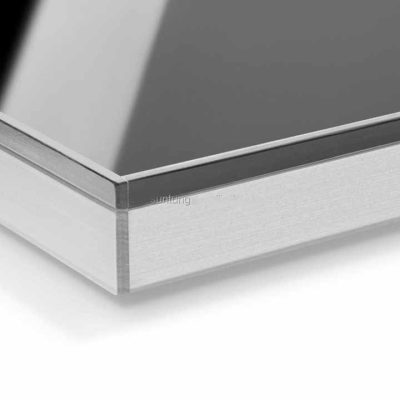Finishing acrylic edges involves processes to achieve a smooth, polished, and aesthetically pleasing look on the cut edges of acrylic sheets. Acrylic, also known as plexiglass or PMMA (Polymethyl Methacrylate), is a transparent plastic material commonly used in various applications. Here’s a guide on how to finish acrylic edges:
Tools and Materials Needed:
- Fine Grit Sandpaper:
- Use fine grit sandpaper (e.g., 400 or higher) to smooth the cut edges. Wet sanding is recommended to prevent overheating and melting of the acrylic.
- Wet/Dry Sandpaper or Abrasive Pad:
- Wet/dry sandpaper or abrasive pads are suitable for wet sanding. They help achieve a smoother finish and reduce the risk of scratching.
- Water or Lubricant:
- Water or a lubricant (such as soapy water) is used during wet sanding to keep the sandpaper lubricated and to prevent overheating.
- Microfiber Cloth or Soft Towel:
- A soft cloth is used to wipe away any residue and to inspect the edges for smoothness.
- Polishing Compound (Optional):
- A polishing compound designed for plastics can be used to further enhance the clarity and shine of the acrylic edges.

- A polishing compound designed for plastics can be used to further enhance the clarity and shine of the acrylic edges.
Steps:
- Cut the Acrylic:
- Begin by cutting the acrylic sheet to the desired size using a fine-toothed saw, a laser cutter, or another suitable cutting tool.
- Remove Rough Edges:
- Use fine grit sandpaper to remove any rough or sharp edges from the cut acrylic. Sand lightly in a back-and-forth motion, keeping the sandpaper flat against the edge.
- Wet Sanding (Optional):
- Wet sanding helps achieve a smoother finish and reduces the risk of overheating or melting the acrylic. Dip the sandpaper or abrasive pad in water or use a lubricant, and sand the edges in a circular motion.
- Inspect the Edges:
- Wipe the edges with a microfiber cloth or soft towel to remove any residue. Inspect the edges to ensure they are smooth and free of rough spots.
- Repeat Sanding (if necessary):
- If the edges are not as smooth as desired, repeat the sanding process with a finer grit sandpaper. Gradually move to higher grits for a smoother finish.
- Polishing (Optional):
- If you want to enhance the clarity and shine of the acrylic edges further, you can use a plastic polishing compound. Apply the compound to a soft cloth and gently polish the edges in a circular motion.
- Clean and Dry:
- Ensure that the acrylic edges are clean and free of any sanding or polishing residue. Allow the edges to dry completely.
- Protective Film (Optional):
- Some acrylic sheets come with a protective film that can be peeled off after finishing. If applicable, remove the protective film after completing the finishing process.
Properly finishing acrylic edges is crucial for achieving a professional and polished appearance. Take your time through each step, gradually progressing through finer grits of sandpaper to achieve the desired level of smoothness and clarity. Always follow safety guidelines, especially when working with power tools or chemicals, and wear appropriate protective equipment.

